Given the competitive environment, companies have increasingly begun to realize that hiring, training, motivating, and retaining the right talent not only improves the bottom line but also plays a key role in strategic long-term planning.
If you are in the process of making a decision as to the right HR software solution for your organization, knowing the challenges you could face and the guidelines to overcome such challenges could be the first step towards going forward in the right direction.
That is just what we intend to do. The following are the questions that you need to be resolved and the challenges you might face when deciding on a Human resources Information System. These challenges are deeply coupled but the attempt is to identify each one separately.
Have We Defined Our Goals?
At first, know thyself. As a first step before looking for an HR software solution, it is imperative to:
- Identify Stakeholders (marketing, production, payroll, etc)
- Demarcate and optimize processes
- Outline short-term operational goals and requirements
- Define long-term strategic goals
The steering committee or decision makers usually do take into consideration short-term operational requirements when planning for an HR Software solution. At times long-term strategic goals may be overlooked.
An example of a long-term strategic goal could be talent acquisition to keep pace with the growth areas of the company for the next five years. Given such a goal, the HR solution should be able to effectively assist in forecasting project manpower requirements over the next five years taking into consideration retirements, promotions, and other reasons for employee attrition.
Saas Vs. On-Premise Solution Vs. Customized
Industry research reports point towards a trend of acceptance of off-the-shelf software solutions hosted on the cloud. The Buy vs. Build decision is veering towards the Buy option.
However many companies usually hesitate before taking the leap towards making a commitment to a Saas based solution. This is not without reason. The option that best fits your organization will depend on a number of discrete factors.
- The level of maturity of your HR processes
- The level of conformity of HR processes to common industry practices
- The compatibility of the proposed solution with the IT infrastructure within your organization.
- TCO of each option
- Vendor accreditation and security
Degree and Extent of Business Process Re-engineering
Most HR Software vendors design applications that implement processes based on generic industry best practices. An HR Software implementation exercise usually provides an opportunity for companies to perform:
- A gap analysis of their processes
- Based on the gap analysis, re-engineer, optimize and integrate business processes into their workflow
- Remove, simplify or rationalize archaic or redundant operational HR practices
On the other hand, if your company already has rational HR procedures and practices in place, then it is a good idea to ensure that the candidate software solution does not require an extensive change in existing processes in the name of business process re-engineering.
To what extent are we committed to change management?
One possible fallout of an HR Software acquisition and implementation and the resulting process of reengineering is resistance to change on the part of the employees. People are comfortable with doing things in one way and convincing them to do it in another way can be an obstacle to the successful implementation of an HR software solution.
The key is to change management from the ground up by:
- Communicating with employees
- Involving the employees in the decision-making process to the extent possible
- Showing employees the benefits of the proposed solution in terms of increased productivity, operational efficiency, and achievement of strategic goals.
Integration with third-party vendors
This is another very important factor that is often ignored and may result in operational bottlenecks.
- How well will the proposed solution integrate with third-party payroll solutions and time-clocking applications?
- Will integration be inbuilt and seamless? Or does it involve cumbersome and possibly error-prone processes of exporting and importing data?
- How committed is the vendor to providing such solutions?
Standalone HR Application Vs. Integrated Module of ERP
One factor that can be easily overlooked is whether the HR functionality should be a part of a standalone HR application or a part of a larger ERP software.
An example in point would be employee data stored by HR. This should be accessible with safeguards by Marketing, Production, and Payroll.
An ERP application would allow controlled accessibility whereas a standalone HR application by its very nature would isolate employee data. It would be a good idea to study the mechanism by which the standalone HR application would allow sharing of sensitive employee data by other applications.
These are a few of the challenges and problems likely to be faced when deciding on an HR Software solution.
